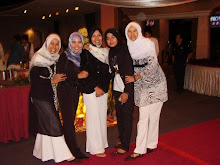
***kita klu nk wat cable utp ni, pakai british pnya standard (EIA/TIA 568B)***
STEP 1: Cut the outer jacket of the wire about 1.5" to 2" from the end. This will give you room to work with the wire pairs. Separate the pairs and align them in the order shown below. Begin flattening the wires into a "ribbon" as shown so that it will easily slip into the connector and into the individual channeled areas.

STEP 2: Once you have all the wires aligned and ready to insert, you must trim them to approximately 1/2" in order to have as little "untwisted" wire in the connection as possible. Category 5 specifications require a certain number of twists per inch and even the connector counts!

 STEP 3: Insert the wires into the connector making sure that each wire goes into its appropriate "channel" and extends all the way to the end of the the connector underneath the gold crimping connectors. Sometimes you can look at the end of the connector to see the copper wires if you're using solid copper cable. If the wires don't extend to the end of the connector, the crimp may not make contact.
STEP 3: Insert the wires into the connector making sure that each wire goes into its appropriate "channel" and extends all the way to the end of the the connector underneath the gold crimping connectors. Sometimes you can look at the end of the connector to see the copper wires if you're using solid copper cable. If the wires don't extend to the end of the connector, the crimp may not make contact.

STEP 4: Press the cable and the jacket into the connector firmly so that the jacket will be crimped by the plastic wedge near the rear of the connector, and insert it into your crimping tool and crimp the cable. RE-CRIMP the cable to make sure all connections are made.
STEP 5: Repeat steps 1 thru 4 for the other end of the cable for a standard ethernet cable








 STEP 3: Insert the wires into the connector making sure that each wire goes into its appropriate "channel" and extends all the way to the end of the the connector underneath the gold crimping connectors. Sometimes you can look at the end of the connector to see the copper wires if you're using solid copper cable. If the wires don't extend to the end of the connector, the crimp may not make contact.
STEP 3: Insert the wires into the connector making sure that each wire goes into its appropriate "channel" and extends all the way to the end of the the connector underneath the gold crimping connectors. Sometimes you can look at the end of the connector to see the copper wires if you're using solid copper cable. If the wires don't extend to the end of the connector, the crimp may not make contact. 
